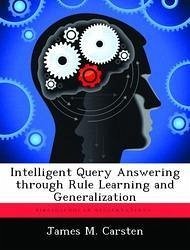The Department of Defense (DoD) relies heavily on information systems to complete a myriad of tasks, from day-to-day personnel actions to mission critical imagery retrieval, intelligence analysis, and mission planning. The astronomical growth in size and performance of data storage systems leads to problems in processing the amount of data returned on any given query. Typical relational database systems return a set of unordered records. This approach is acceptable in small information systems, but in large systems, such as military image retrieval systems with more than 1 million records, it requires considerable time (often hours to days) to sort through thousands of records and select the relevant for analysis. This research introduces Intelligent Query Answering (IQA) as a novel approach to information retrieval. IQA implements the FOIL algorithm to learn rules based upon user feedback [QUI90]. The Winnow algorithm adjusts rule weights based on user classification, for improved document orderings [BLU97]. A semantic tree specific to the domain allows rule generalization across the domain.
Hinweis: Dieser Artikel kann nur an eine deutsche Lieferadresse ausgeliefert werden.
Hinweis: Dieser Artikel kann nur an eine deutsche Lieferadresse ausgeliefert werden.








